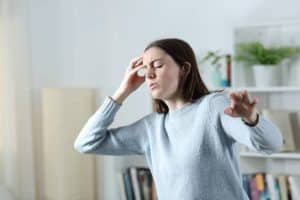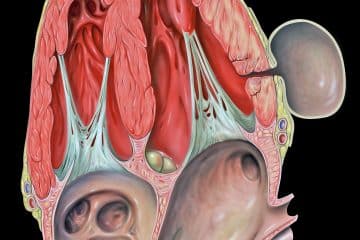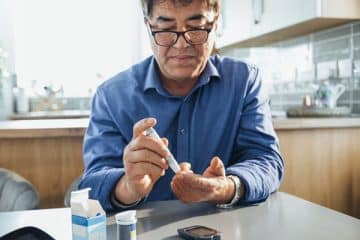Postural Orthostatic Tachycardia Syndrome-
What is POTs Syndrome?

Postural orthostatic tachycardia syndrome
The rapid acceleration in heartbeats that happens following sitting up or standing is known as postural tachycardia syndrome (POTS). Drowsiness and collapse are two common symptoms.
Some people experience very minor symptoms, while others report that the disorder has a negative impact on their quality of life. Postural orthostatic tachycardia syndrome usually gets better with time, and there are several medications and self-care techniques that can assist.
No matter what position the body is in, the heart rate and blood pressure work together to maintain the blood flowing at a healthy rate. The delicate balance of blood vessel constriction and heart rate reaction is not functioning well in most people with POTS. This means that blood pressure cannot be maintained at a constant level.
Every case of Postural orthostatic tachycardia syndrome is unique. POTS individuals may experience symptoms that come and go over time. A person with POTS can usually improve their quality of life by adjusting their diet, medications, and physical fitness. If an actual cause is identified and managed, POTS symptoms may improve.
POTs syndrome Epidemiology
Postural orthostatic tachycardia syndrome is the most frequent kind of orthostatic intolerance and autonomic dysfunction, with both cardiac and non-cardiac manifestations. Up to 3,000,000 Americans or around 1 percent of the total population, are affected with POTS.
POTS affects a broad variety of people, although it is most prevalent in girls and females between the ages of 14 and 50.
POTs Syndrome Causes
The etiology of POTS (postural orthostatic tachycardia syndrome) is unknown.
Many scientists believe there could be multiple causes for the illness. The following problems have been linked to POTS and may play a significant role in its progression:
1. Nerve fibers in specific muscles, particularly those in the legs and feet, are not functioning properly.
2. A decrease in the blood volume flowing in the circulation (caused, for instance, by blood stasis in the abdomen and lower limbs).
3. When going from a lying to a standing position, there is insufficient blood flow back to the heart.
4. Heart and blood vessel’s function changes.
5. Blood pressure control that is out of tune.
6. The fight-or-flight reaction is intensified.
POTs Syndrome Triggers
Episodes of Postural Orthostatic Tachycardia Syndrome are more likely to start after:
• Being pregnant.
• Surgical intervention.
• Traumatic injury.
• A viral disease.
• shortly before menses.
POTs syndrome Symptoms
• Fainting or drowsiness
• Difficulty with thinking, remembering, and focusing “brain fog”
• Abnormal heartbeats
• Exhaustion and weakness
• Headaches
• A lack of sleep
• Chest discomfort, nausea, and breathlessness
• Sweating
POTs syndrome diagnosis
Characteristic signs and symptoms of postural orthostatic tachycardia syndrome (POTS) are frequently suspected. The diagnosis can then be confirmed with additional tests. Many doctors will perform a physical examination that includes blood pressure and heart rate measurements while lying, seated, and standing.
The additional tests can be ordered:
• ECG (asses your heart electrical activity)
• ECHO (ultrasound to look to your heart)
• Serum tests (liver, kidney, and thyroid function tests)
POTs syndrome treatment
Treating acute attack of Postural orthostatic tachycardia syndrome
If possible, lie down and raise your legs.
If you can’t lie down, try elevating your legs and crossing them in front of
each other.
While upright, moving up and down on your toes, tightening your glutes and abdominal muscles, and/or squeezing your fists.
Minimizing the symptoms
• Until your urine is pale yellow, drink lots of water.
• Keep moving, but take it slowly and pick your exercises cautiously (see also: Does Stretching Prevent Injury)
• Aerobics exercises are all good ways to stay in shape and gain muscle (strong calf muscles should help pump blood back to your heart)
• Raising the head of your bed will keep you from sleeping completely horizontally.
• To enhance blood supply in your lower limbs, try to wear support stockings or other types of neoprene sleeves.
• Avoid standing for extended periods.
• After lying in bed, rise gently and sit for a few minutes before rising. Avoid drinking coffee and alcohol heavily.
• Increase the amount of salty diet.
Medications
Your doctor can prescribe a few medications to control the symptoms of Postural orthostatic tachycardia syndrome and keep the disease under check
B-blockers or ivabradine: Decreases the heart rate
Fludrocortisone: Prevents losing sodium in the urine
Selective serotonin reuptake inhibitors: Controls how your nervous system reacts
Midodrine: Makes blood vessels contract and blood pressure rise.
References
https://www.nhs.uk/conditions/postural-tachycardia-syndrome/
https://www.hopkinsmedicine.org/health/conditions-and-diseases/postural-orthostatic-tachycardia-syndrome-pots
https://www.potsuk.org/
See Also
Can you live without a pancreas

Dr.Sharif Samir Alijla, is a general medical doctor and a well-rounded professional that cares and treats patients from Palestine. I participated in many medical studies and conferences, I've launched a range of community initiatives and taken part in a variety of leadership and change training programs. I worked as an author for many medical websites such as TebFact . I specialized in writing medical articles from authoritative and updated sources in a simple and smooth the way for the reader.



